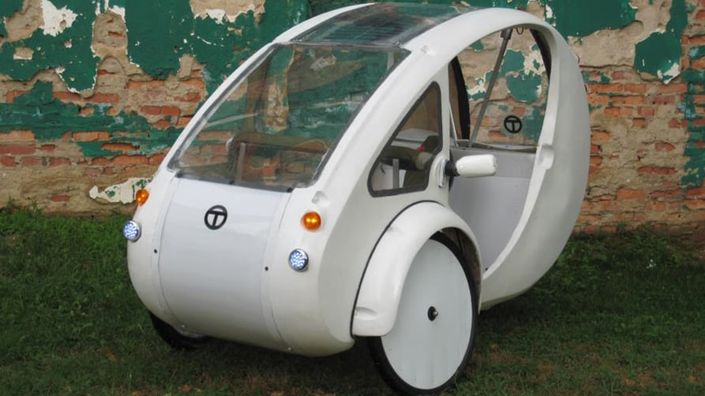General Motors introduced the world’s first solar-powered transport more than six decades ago. The ‘Sunmobile’, a mere 15-inch car, was showcased in Chicago at their Powerama auto show in 1955. Attempts at launching solar-powered transport slowed down over the coming decades.
Today, however, thanks to the increased demand for more eco-friendly transport the reality of experiencing solar energy in commercialised vehicles seems closer than ever before.
Solar power is a leading option for this mission. Although the technology is weather dependent, and the solar panels are costly and take up significant amount of space, it has many benefits.
The sun is an infinite source of energy (for the next five billion years, at least) and can be harnessed all over the world. Fuel funds that eat up a chunk of everyone’s wallets could be saved. Solar panels are also easy to maintain, only requiring occasional cleaning few times a year.
With rapid advancements in solar power technology, engineers all over the world have been testing their solar-powered transport innovations on the road, in the sky, and even out at sea.
1. Project Tejas

Naveen Rabelli, a 35-year-old Indian automotive engineer, decked out a tuk-tuk with solar panels for a world tour that may have seemed cumbersome for many. But not for Rabelli, who began his journey in February in India and ended it on 16 September 2016 in London. The trip could have ended even sooner if it weren’t for a small mishap in Paris where some of his battery packs died and his passport got stolen.
For this 6,200-mile trip the tuk-tuk came equipped with a bed, a passenger seat, a cupboard for food that people donated to him on the road, and even another solar-powered invention of his- a cooker.
Rabelli states that the reason he took on this expedition was to educate and inform people of the ecological and economic benefits of solar energy. The idea came to him while he was trapped in a suffocating Mumbai traffic jam that inspired him to create a vehicle that could tackle pollution.
2. Solar Impulse 2

A significantly longer and riskier journey than the tuk-tuk, the Impulse 2 is a solar-powered plane that achieved the feat of completing a circumnavigation of the world in 505 days over 26,000 miles. Piloted by Swiss engineers Bertrand Piccard and Andre Borchberg who took flight from Abu Dhabi, the plane is equipped with more than 17,000 solar panels and weighs 2.4 tons with a 72m wingspan.
While companies such as Boeing and Airbus are pursuing the technology, solar-powered planes in the commercial sector may remain a pipedream for a while, as the flight was slowed down by technical challenges, adverse weather conditions, as well as a delicate design. Nevertheless, this circumnavigation goes to show the heights solar-powered vehicles can reach if the technology is researched and developed further.
3. ‘Solar Impulse of the seas’

Inspired by the Solar Impulse 2 plane, this solar-powered boat could be seen as its nautical counterpart. Made at a cost of €4.2 million, the boat that is currently docked on the French west coast will soon begin its maiden voyage spanning six years.
During this time, however, it won’t harness its renewable energy solely from solar power. The boat will also be fitted with wind turbines and autonomous electrolysis equipment for the production of hydrogen, in addition to solar panels. The idea is for the hydrogen to power the boat in adverse weather conditions or night time.
The vessel is estimated to require at least €4 million a year to complete its voyage, but the team in charge are confident that funding will pour in for this ambitious project.
4. The Elf

Known as a ‘velomobile’, this vehicleis a crossover between a car, a motorcycle and a bicycle. It is a hybrid that can accommodate solar power, electricity and human power to run. The project was launched after a Kickstarter campaign raised $225,789 for it to be built.
The driver can choose to either peddle, or when becoming fatigued choose to turn on the motor that runs on a 480W Lithium battery. This can be fully charged in two hours or slowly throughout the day under the sun, using the solar-panelled roof.
Considered a bicycle under American federal law, it can be driven anywhere bicycles are permitted instead of being restricted to roads. It can run for 30mph for 48 miles on a fully charged motor. The frame is constructed from recycled aluminium that weighs 72.5748kg and can hold cargo weight up to 158.757kg in its rear compartment. Due to the minimalist design, The Elf can be assembled quickly and cheaply.
5. Gamera

Engineering students at the University of Maryland built a helicopter that successfully lifted off the ground with a passenger in the cockpit through solar power alone. The vehicle managed to levitate 0.3048m above the ground and stay airborne for nine seconds.
Although the helicopter may not be able to embark upon long distance flights, it has inspired and encouraged students to strive for renewable energy solutions for their engineering innovations.